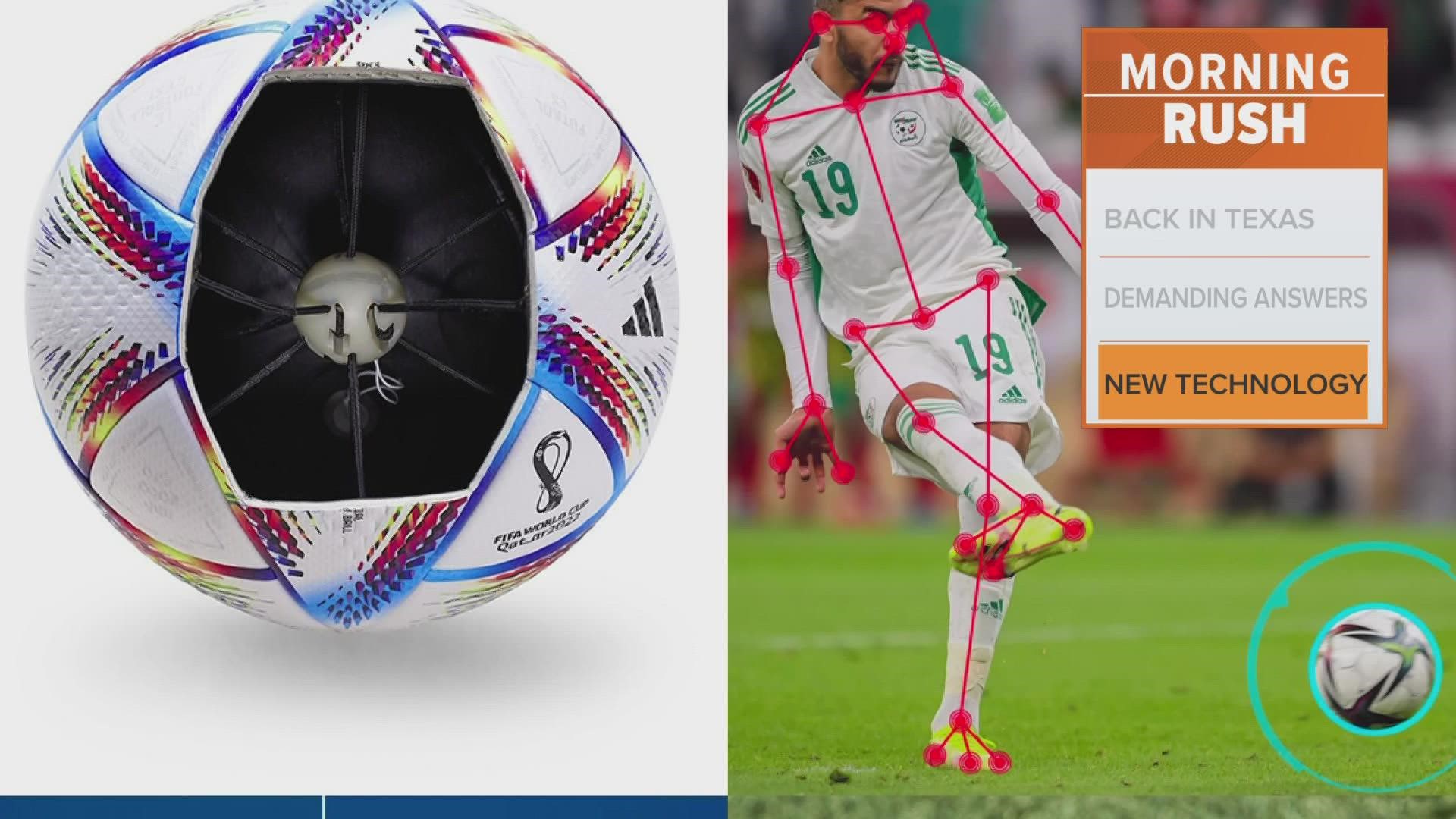DALLAS — For the first time ever at a World Cup, soccer matches will feature new "semi-automated offside technology," which includes a ball with a tracking device.
Twelve cameras positioned inside the World Cup stadiums will track the "Al Rihla" – adidas’ official match ball for Qatar 2022 – and up to 29 data points of each individual player’s limbs and extremities, 50 times per second, calculating their exact position on the pitch, FIFA said. The technology was announced as "a support tool for the video match officials and the on-field officials to help them make faster, more accurate and more reproducible offside decisions."
The 2022 World Cup is still months away, but the announcement of the new technology was not received well online from soccer fans, already.
FOX Soccer tweeted out the news with a social graphic, and the reaction from fans was significantly against the idea. Most comments say the technology will ruin the game.
"By combining the limb- and ball-tracking data and applying artificial intelligence, the new technology provides an automated offside alert to the video match officials inside the video operation room whenever the ball is received by an attacker who was in an offside position at the moment the ball was played by a team-mate," FIFA said in a news release. "Before informing the on-field referee, the video match officials validate the proposed decision by manually checking the automatically selected kick point and the automatically created offside line, which is based on the calculated positions of the players’ limbs. This process happens within a few seconds and means that offside decisions can be made faster and more accurately."
FIFA said that after the decision has been confirmed by the video match officials and the referee on the pitch, the exact same positional data points that were used to make the decision are then generated into a 3D animation that details the position of the players’ limbs at the moment the ball was played. The 3D animation generated from this data is what will be displayed on broadcasts and spectators, according to FIFA.
In the example from the video, the offensive player was ruled offside by a toe, kneecap and arm length.
This announcement comes after VAR (video assistant referee) technology was introduced in the 2018 FIFA World Cup in Russia.
“At the FIFA World Cup in 2018, FIFA took the brave step to use VAR technology on the world’s biggest stage, and it has proven to be an undisputable success. Semi-automated offside technology is an evolution of the VAR systems that have been implemented across the world," FIFA President Gianni Infantino said. "This technology is the culmination of three years of dedicated research and testing to provide the very best for the teams, players and fans who will be heading to Qatar later this year, and FIFA is proud of this work, as we look forward to the world seeing the benefits of semi-automated offside technology at the FIFA World Cup 2022. FIFA is committed to harnessing technology to improve the game of football at all levels, and the use of semi-automated offside technology at the FIFA World Cup in 2022 is the clearest possible evidence.”
For more information on the new World Cup match ball for 2022, as well as the supplementing semi-automated offside technology, click here.

